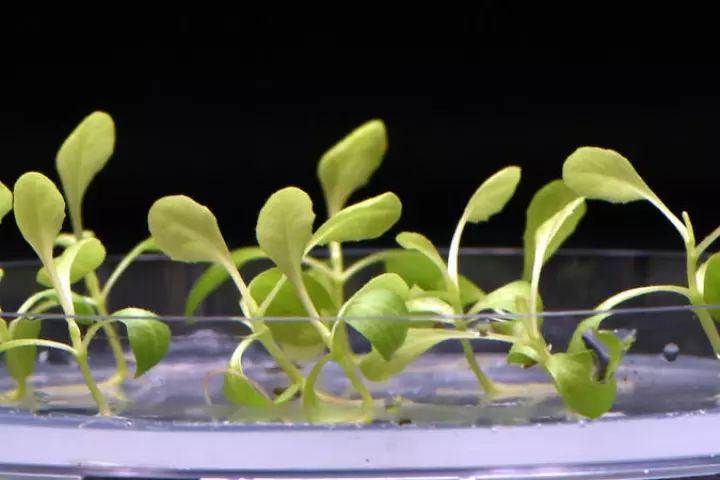artificial photosynthesis
-
EPFL engineers have built and tested a solar reactor that generates hydrogen gas from sunlight and water. The system is not only highly efficient at producing hydrogen, it also captures the “waste” products of oxygen and heat to put them to use too.
-
Scientists have improved on the natural process of photosynthesis, not only growing plants more efficiently, but doing so in the dark. This could expand agriculture to areas that don’t get enough sunlight, and even help feed future space explorers.
-
Scientists have long studied the abilities of photosynthetic bacteria that turn sunlight, carbon dioxide and water into energy, and by giving these communities a home likened to a high-rise apartment block, a team has broken new ground in this space.
-
"Artificial leaf" systems could play a key role in the fight against climate change, and a team of engineers has just picked up the pace with a solution that captures carbon dioxide at 100 times the rate of current technologies.
-
Scientists have demonstrated how encasing algae in tiny liquid crystal droplets can boost its natural energy harvesting abilities by up to three times, marking another step toward commercial viability for artificial photosynthesis.
-
Scientists have now demonstrated a new type of artificial photosynthesis technology that can not only produce clean hydrogen fuel, but undergo morphological changes during use that makes it become more efficient over time.
-
A team from the University of Cambridge has produced a wireless sheet packed with photocatalysts that converts sunlight, water and carbon dioxide into clean fuels, with hopes of one day using the device as part of giant energy farms.
-
Photosynthesis is one of nature’s most useful chemical reactions, so scientists often try to mimic it. Researchers have now developed a new way to make hybrid synthetic-living cells that can use photosynthesis to clear carbon dioxide from the air.
-
Artificial leaves can convert sunlight, water and carbon dioxide into energy or even be used to produce fuels. Now, researchers from Cambridge have developed a new version that can produce synthetic gas (or syngas) without releasing carbon dioxide.
-
Over the last few years humans have tried to mimic nature with artificial leaves, but they’re never quite up to scratch. Now, researchers have designed a new version that could work under real-world conditions, sucking carbon dioxide out of the air and creating oxygen and synthetic fuels.
-
Researchers at Rutgers University have made an exciting breakthrough, describing a new method of artificial photosynthesis that can convert carbon dioxide into the building blocks for plastics and other materials, and do so with greater efficiency and much more cheaply than ever before.
-
Artificial photosynthesis devices can split water into hydrogen and oxygen, but they still suffer from some efficiency issues. Now a new hybrid device may be able to recover some of the energy that would otherwise go to waste, by producing both hydrogen and electricity.
Load More











